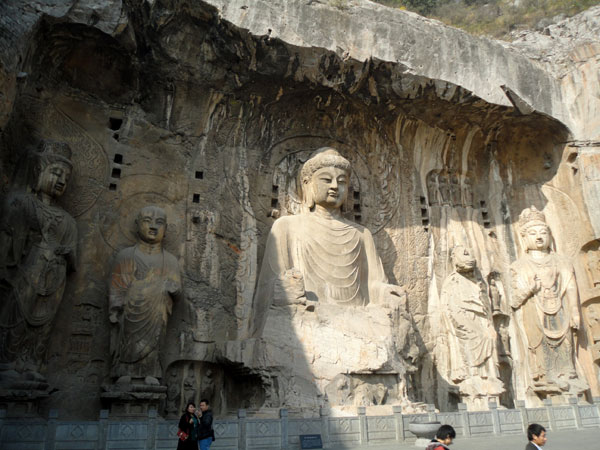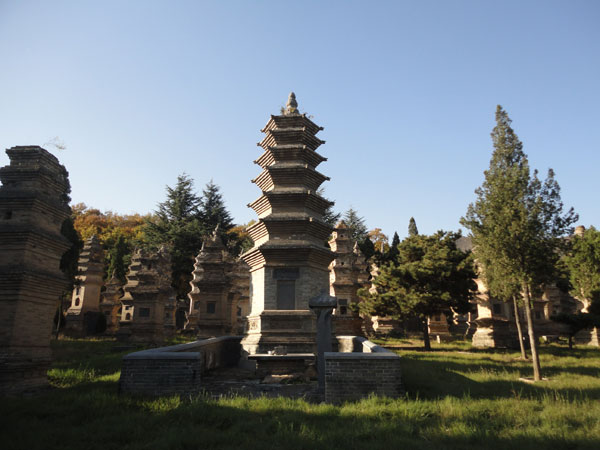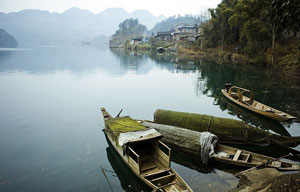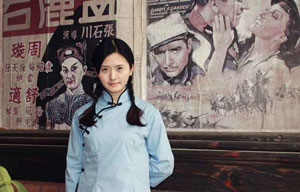Resting place of tranquility
 |
|
The main reason to visit Luoyang is Longmen Grottoes, one of the four famous Buddhist grottoes in China. Photos by Hilton Yip / for China Daily |
 |
|
Pagoda Forest in the Shaolin Temple. |
Luoyang served as the capital of 13 Chinese dynasties and kingdoms. Hilton Yip lists some of the attractions of the ancient city.
When you ask an expatriate to name the four ancient great capitals of China, most will list them in this order: Beijing, Xi'an, Nanjing and lastly, Luoyang in Henan province. Luoyang may lack the modernization and fame of the other capitals, but it boasts several famous sights, including Longmen Grottoes, a UNESCO World Heritage Site. It also has an impressive museum, housed in a new building, and the first Buddhist temple in China, the approximately 1,950-year-old White Horse Temple.
China, most will list them in this order: Beijing, Xi'an, Nanjing and lastly, Luoyang in Henan province. Luoyang may lack the modernization and fame of the other capitals, but it boasts several famous sights, including Longmen Grottoes, a UNESCO World Heritage Site. It also has an impressive museum, housed in a new building, and the first Buddhist temple in China, the approximately 1,950-year-old White Horse Temple.
With a history dating back to the 12th century BC, Luoyang served as the capital of 13 dynasties and kingdoms, including the Eastern Han Dynasty (AD 25-220) and the Kingdom of Wei, during the famed Three Kingdoms (AD 220-280) period.
During the Tang Dynasty (AD 618-907), it was the Eastern Capital, second only to the imperial capital Xi'an.
The first place to grasp Luoyang's 3,000 years plus heritage is at Luoyang Museum.
Housed in a massive reddish-brown building perched grandly atop a gray foundation overlooking a park, the museum dominates its landscape.
This is a new building, which the Luoyang Museum moved into in 2011, having been operating since 1958 at previous locations. In fact, it is so new that websites and even some Luoyang locals, whom I spoke to on a bus, still think the museum is at its previous location.
The museum's spacious interior features an extensive collection of artifacts that date from the Xia Dynasty (c.21st century-16th century BC) to the Tang Dynasty.
The famous Tangsancai, tri-colored glazed ceramic horses and camels of the Tang Dynasty are of course, on display prominently.
For those who want to see truly ancient artifacts, there is a fully upright skeleton of an Asian mammoth (Palaeoloxodon naumanni), fossils from the Paleolithic age, prehistoric artifacts from 5,000 years ago, as well as ding (cauldrons) from the Xia Dynasty.
The main reason to visit Luoyang is Longmen Grottoes, one of the four most famous Buddhist grottoes in China.
Here, past emperors ordered tens of thousands (no exaggeration) of Buddhist statues carved into caves in the cliffs along both sides of the Yihe River.
The most impressive are the nine giant Buddhas that stand several stories high, with the highest at 17 meters, flanked by heavenly kings, temple guards and other divine figures.
In contrast, some tiny Buddha carvings were smaller than the palm of my hand while others were human-sized. The fine craftsmanship and the massive numbers of carvings alongside the cliff walls made me think of Angkor Wat in Cambodia.
The first statues were carved from AD 493 during the Northern Wei Dynasty (AD 386-534), but most were carved during the Tang Dynasty.
It's not surprising that a number of statues have been disfigured, either by time or warfare.
Don't make the mistake I did and assume that from photos and information gleaned from the Internet, Longmen Grottoes can easily be viewed in two hours.
















